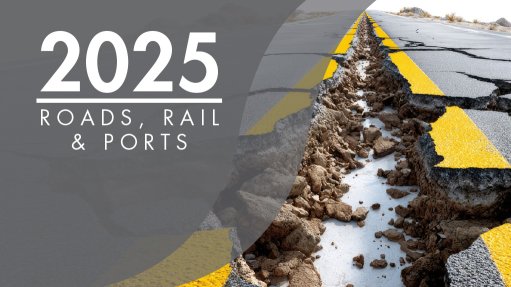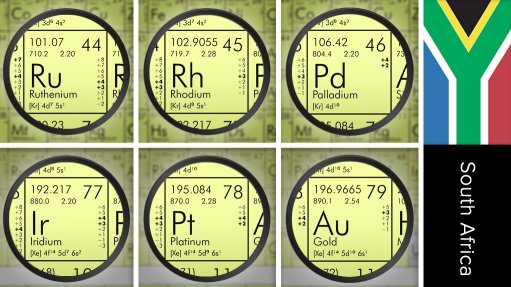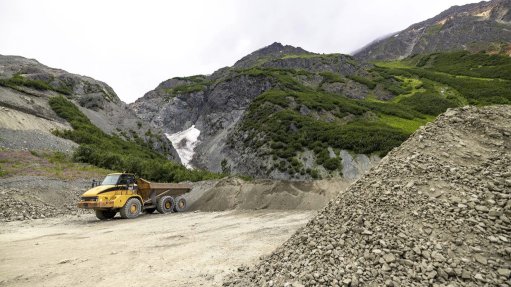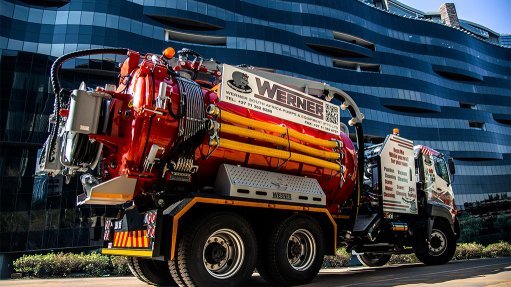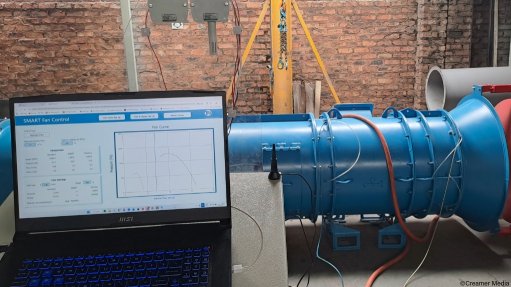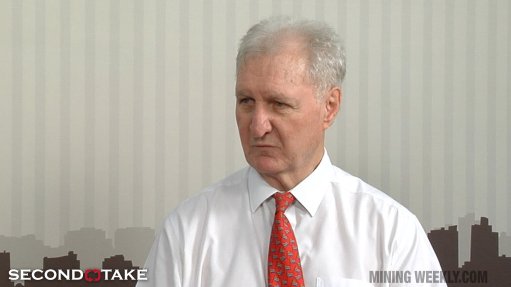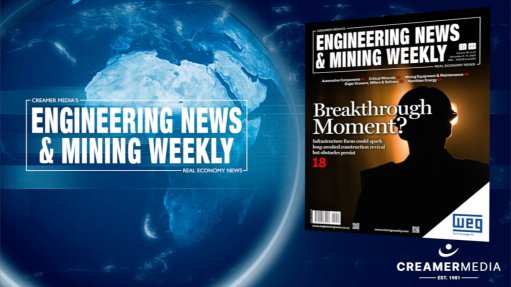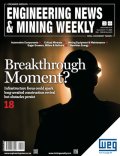Mining in the age of AI: Smarter, faster, leaner
This article has been supplied.
By: Hanno Van Niekerk, Market Leader – Sub Saharan Africa, AVEVA
As the global energy transition accelerates, demand for critical minerals like lithium, cobalt and nickel is surging. At the same time, mining operators face mounting costs, stricter environmental regulations, and a shrinking labor pool.
The pressures are real – and growing. So, how can companies do more with less? The answer lies in harnessing the right technologies to turn volatility and uncertainty into strategic advantage.
According to management consultants McKinsey, advanced analytics and digital tools could generate up to $290 billion in added value across the mining and metals sector by 2035, through higher productivity, predictive maintenance, and better operational decision-making.
Shifting from lag to lead with real-time data
Today’s digitally led companies are harnessing real-time operations data. They’re using live insights to enable supervisors to respond to performance issues as they happen – across mobile mining equipment, process plant, asset health, energy consumption, and sustainability.
By leveraging digital tools, companies can gain a complete view of enterprise operations data at multiple sites. They can access pit-to-port visibility of material movements, inventory balances, ore grade, and equipment availability across the entire mining value chain, while integrating data sources such as pump and conveyor data to improve operational visibility.
For example, operators can optimize the supply of bulk commodities such as iron ore or coal by blending materials from multiple sites to meet final customer specifications. They could also refine blending strategies and coordinate the timing of shipments at port facilities to ensure production aligns with delivery schedules.
These types of changes are even more transformative in large, geographically dispersed operations, where even minor inefficiencies can lead to significant losses.
Digitalization drives down energy usage
Mining operations are energy-intensive but the good news is that digital tools can now optimize power usage while dramatically driving down costs.
It’s possible to pull live data from systems to identify where power is being used inefficiently and which assets are consuming more than their baseline. Companies can then respond in real-time – whether it’s by shutting down idle conveyors, optimizing ventilation fans, or tweaking operations.
AI, machine learning and data analytics can be leveraged to recommend optimal settings for equipment – such as mill speeds, pump pressures, or ventilation setpoints – that minimize energy use without compromising output.
A case in point is the world’s largest gold mining company Newmont. To enhance production at its Papua New Guinea site, Newmont integrated a data management and analytics platform with equipment telematics, fleet management and ERP systems.
This initiative has reduced fuel usage by 1%, improved equipment availability by 3%, and identified a 5% opportunity to reduce diesel consumption – equivalent to $1.5 million annually – while lowering CO₂ emissions.
Streamlined, optimized maintenance
In the past, heavy equipment maintenance has been either reactive – fixing problems after failure – or preventive – based on manufacturer schedules.
Modern predictive maintenance changes the game. By continuously monitoring real-time sensor data – such as vibration and temperature – mining companies can detect early warning signs of mechanical issues before they occur.
This allows them to schedule interventions precisely when needed, rather than stocking costly components like haul truck tires on site “just in case”. In remote operations where downtime is costly and supply chains are long, predictive maintenance helps strike the balance between reliability and cost-efficiency.
This capability, powered by AI and machine learning, demonstrably extends the lifespan of machinery, reduces unscheduled downtime, and improves plant safety.
According to data from the US Department of Energy, predictive maintenance can reduce mining equipment maintenance costs by up to 30% and unplanned downtime by as much as 50%.
What’s more, a centralized, digitally integrated maintenance approach enhances consistency across multiple sites, while improving spare-parts inventory planning and optimization.
Digital engineering reduces costs and time-to-market
Operators are also turning to digital tools to optimize mine planning and design.
3D modelling and simulation allows engineers to visualize and plan infrastructure, such as plants, mills and crushers, with far greater accuracy. Digital twins can replicate real-world conditions, enabling scenario testing before ground is even broken – minimizing risk and enhancing returns.
For example, global mining firm Rio Tinto has deployed a suite of digital tools to drive greater efficiency, transparency and control across major resource development projects.
A secure, cloud-hosted environment provides real-time visibility into cost and schedule performance – transforming uncertainty into predictability and enabling more agile decision-making.
One of the most significant advancements has been the shift toward design reuse. For the first time, an entire crushing facility, including conveyor systems, was replicated from one project to another. This approach moves beyond modularity, enabling the reuse of entire facilities and significantly reducing engineering time and capital expenditure.
A broader push toward standardization is also underway. By preconfiguring project environments and enabling the early integration of engineering service providers, what once required up to six months of preparation can now be executed in weeks.
The ability to access this information globally via a secure cloud infrastructure is reshaping how large-scale projects are managed. Remote visibility and collaboration are now operational realities.
A smart, sustainable and profitable future
Mines of the future will be powered by real-time data and supported by predictive analytics, remote operations, and AI.
Digitalization is key to producing the critical minerals and metals for the energy transition, while helping mining companies meet their sustainability goals and thrive in increasingly competitive environments.
Industrial organizations that invest in these capabilities today are positioning themselves for future resilience, operational success, and global leadership.
Article Enquiry
Email Article
Save Article
Feedback
To advertise email advertising@creamermedia.co.za or click here
Press Office
Announcements
What's On
Subscribe to improve your user experience...
Option 1 (equivalent of R125 a month):
Receive a weekly copy of Creamer Media's Engineering News & Mining Weekly magazine
(print copy for those in South Africa and e-magazine for those outside of South Africa)
Receive daily email newsletters
Access to full search results
Access archive of magazine back copies
Access to Projects in Progress
Access to ONE Research Report of your choice in PDF format
Option 2 (equivalent of R375 a month):
All benefits from Option 1
PLUS
Access to Creamer Media's Research Channel Africa for ALL Research Reports, in PDF format, on various industrial and mining sectors
including Electricity; Water; Energy Transition; Hydrogen; Roads, Rail and Ports; Coal; Gold; Platinum; Battery Metals; etc.
Already a subscriber?
Forgotten your password?
Receive weekly copy of Creamer Media's Engineering News & Mining Weekly magazine (print copy for those in South Africa and e-magazine for those outside of South Africa)
➕
Recieve daily email newsletters
➕
Access to full search results
➕
Access archive of magazine back copies
➕
Access to Projects in Progress
➕
Access to ONE Research Report of your choice in PDF format
RESEARCH CHANNEL AFRICA
R4500 (equivalent of R375 a month)
SUBSCRIBEAll benefits from Option 1
➕
Access to Creamer Media's Research Channel Africa for ALL Research Reports on various industrial and mining sectors, in PDF format, including on:
Electricity
➕
Water
➕
Energy Transition
➕
Hydrogen
➕
Roads, Rail and Ports
➕
Coal
➕
Gold
➕
Platinum
➕
Battery Metals
➕
etc.
Receive all benefits from Option 1 or Option 2 delivered to numerous people at your company
➕
Multiple User names and Passwords for simultaneous log-ins
➕
Intranet integration access to all in your organisation







